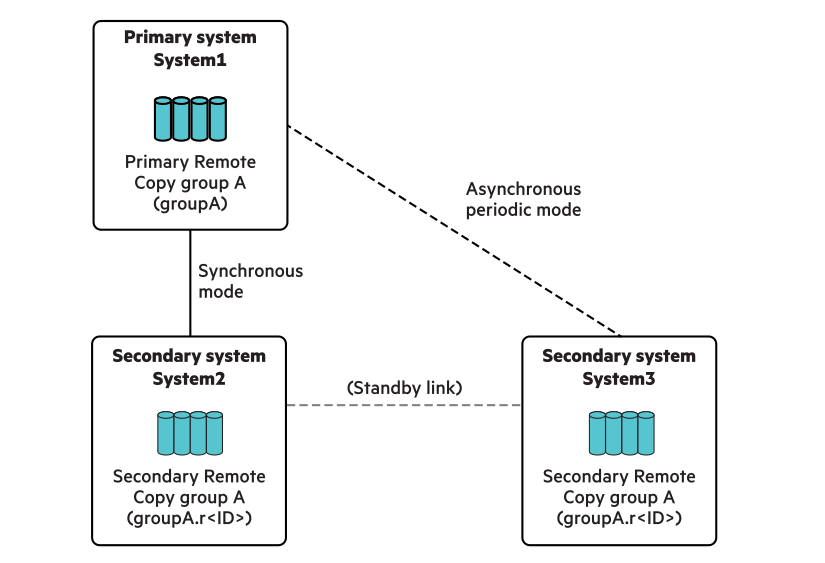Synchronous long distance Remote Copy configuration
A synchronous long distance (SLD) Remote Copy configuration is composed of three systems: one primary and two secondary systems.
The Remote Copy groups from the primary system are replicated to the two separate target systems simultaneously. Data replicates to one target in synchronous mode and to the second in asynchronous periodic mode.
Remote Copy links for SLD can be all RCIP, all RCFC, or a mixture of each. See the HPE Primera Support Matrix for supported configurations.
While it is not a requirement, Hewlett Packard Enterprise recommends that SLD is configured:
In synchronous mode, between the primary system and the closer of the two secondary systems. The chosen systems must be within supported network latency limitations for synchronous Remote Copy. The systems are connected through RCIP or RCFC.
In asynchronous periodic mode, between the primary system and the secondary system that is physically farther apart (and therefore likely to share a slower connection).
SLD Remote Copy links can be bidirectional between two storage systems using synchronous mode. This bidirectional synchronous relationship enables you to configure multiple SLD configurations among three storage systems. You can also have separate Remote Copy groups that are not part of the SLD configuration. These groups can be set up synchronously between the synchronous systems, or periodically between one of the synchronous systems and the periodic system.
